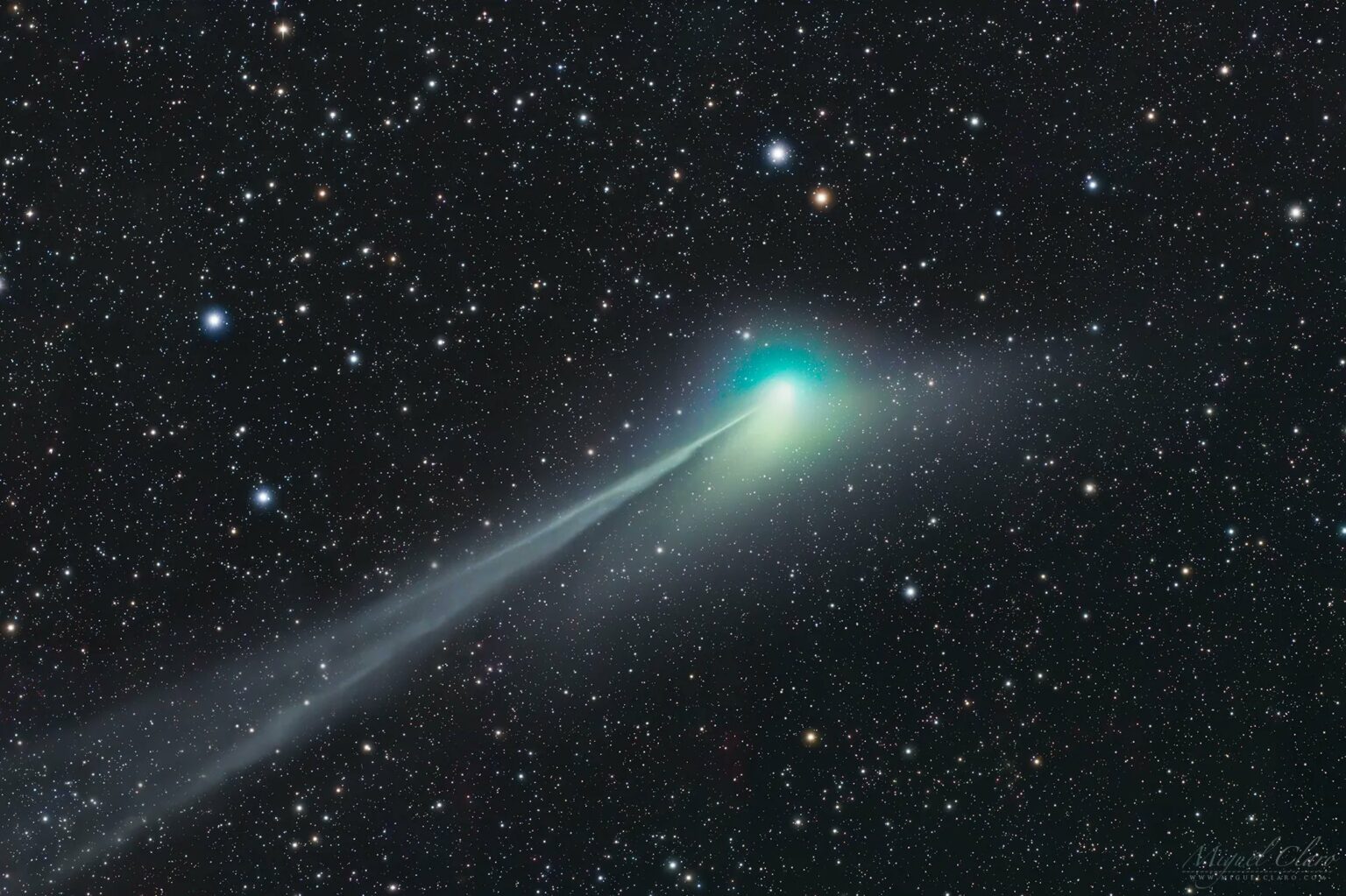
Comet C/2022 E3 (ZTF) was discovered by astronomers using the wide-field survey camera at the Zwicky Transient Facility this year in early March. Since then the new long-period comet has brightened substantially and is now sweeping across the northern constellation Corona Borealis in predawn skies. It's still too dim to see without a telescope though. But this fine telescopic image from December 19 does show the comet's brighter greenish coma, short broad dust tail, and long faint ion tail stretching across a 2.5 degree wide field-of-view. On a voyage through the inner Solar System comet 2022 E3 will be at perihelion, its closest to the Sun, in the new year on January 12 and at perigee, its closest to our fair planet, on February 1. The brightness of comets is notoriously unpredictable, but by then C/2022 E3 (ZTF) could become only just visible to the eye in dark night skies.
The observed values of Magnitude, Coma Diameter and Tail Length are derived from the most recent observation recorded at the Comet Observers Database. The value of Predicted Magnitude comes from the JPL Horizons ephemerides service and, in the case of comets, might be inaccurate given the highly dynamic and unpredictable behavior of these objects. When available, please refer to the Observed Magnitude value and consider the Predicted Magnitude as a directional indication. We acknowledge with thanks the comet observations from the COBS Comet Observation Database contributed by observers worldwide and used in this table to report recent comet observations.